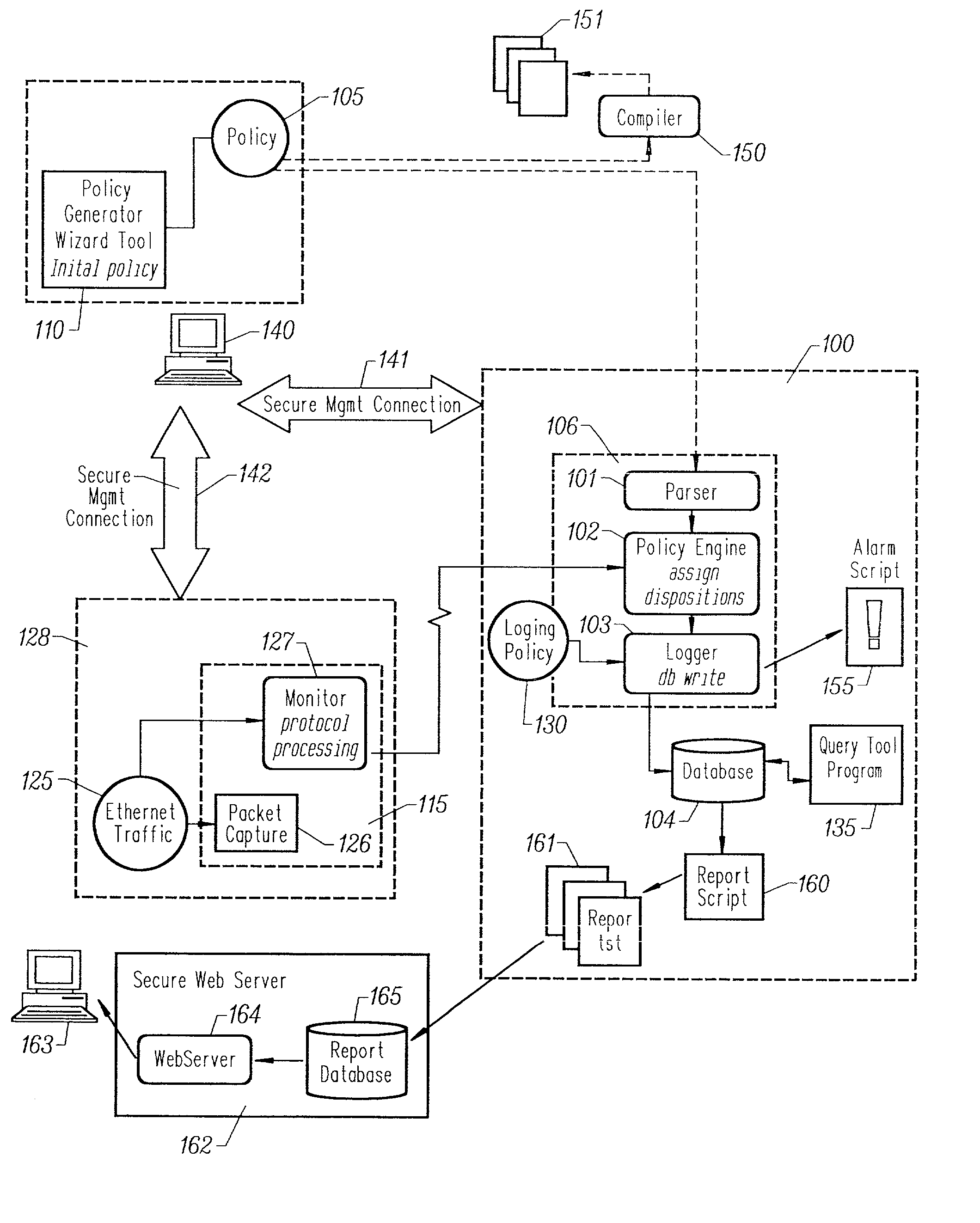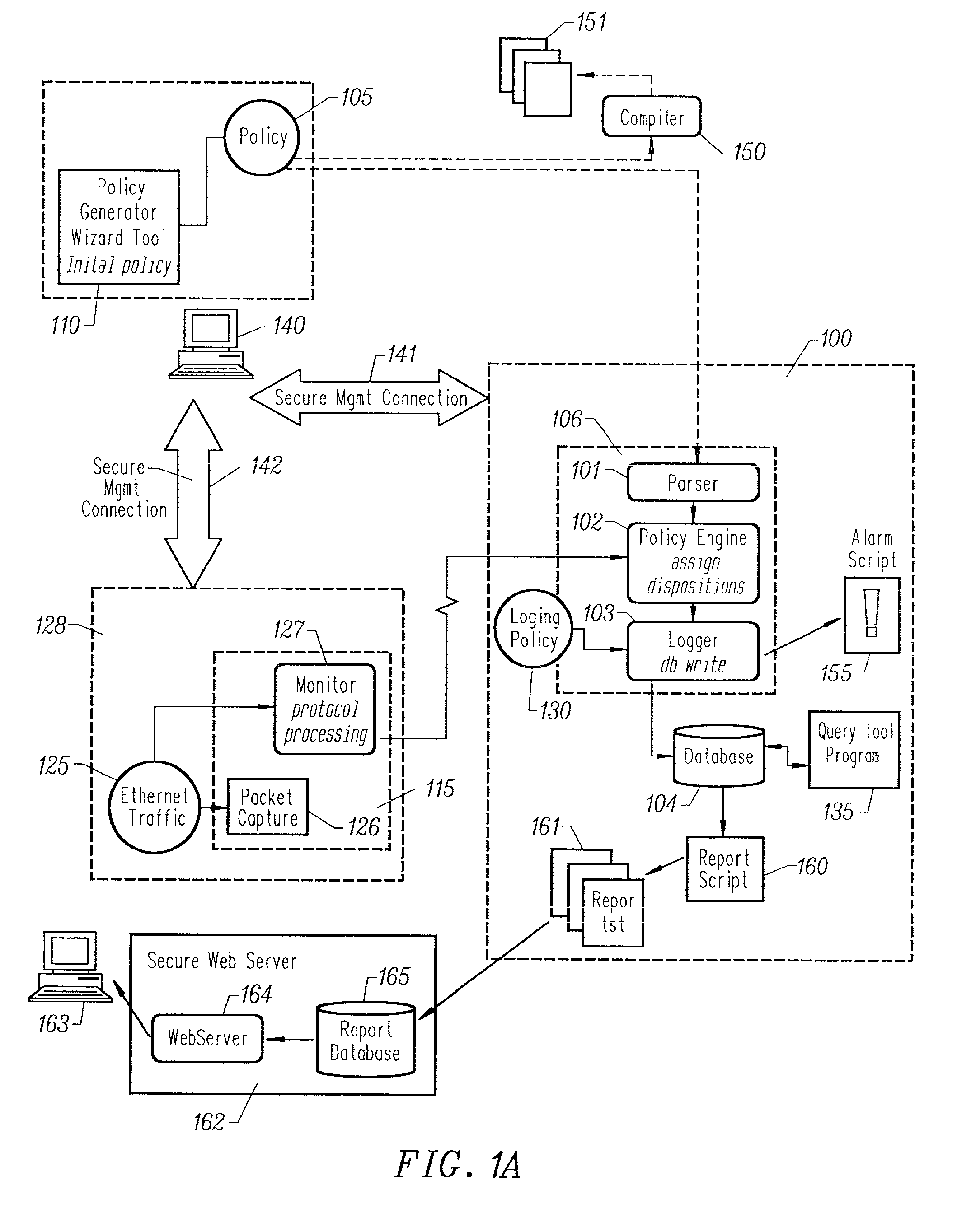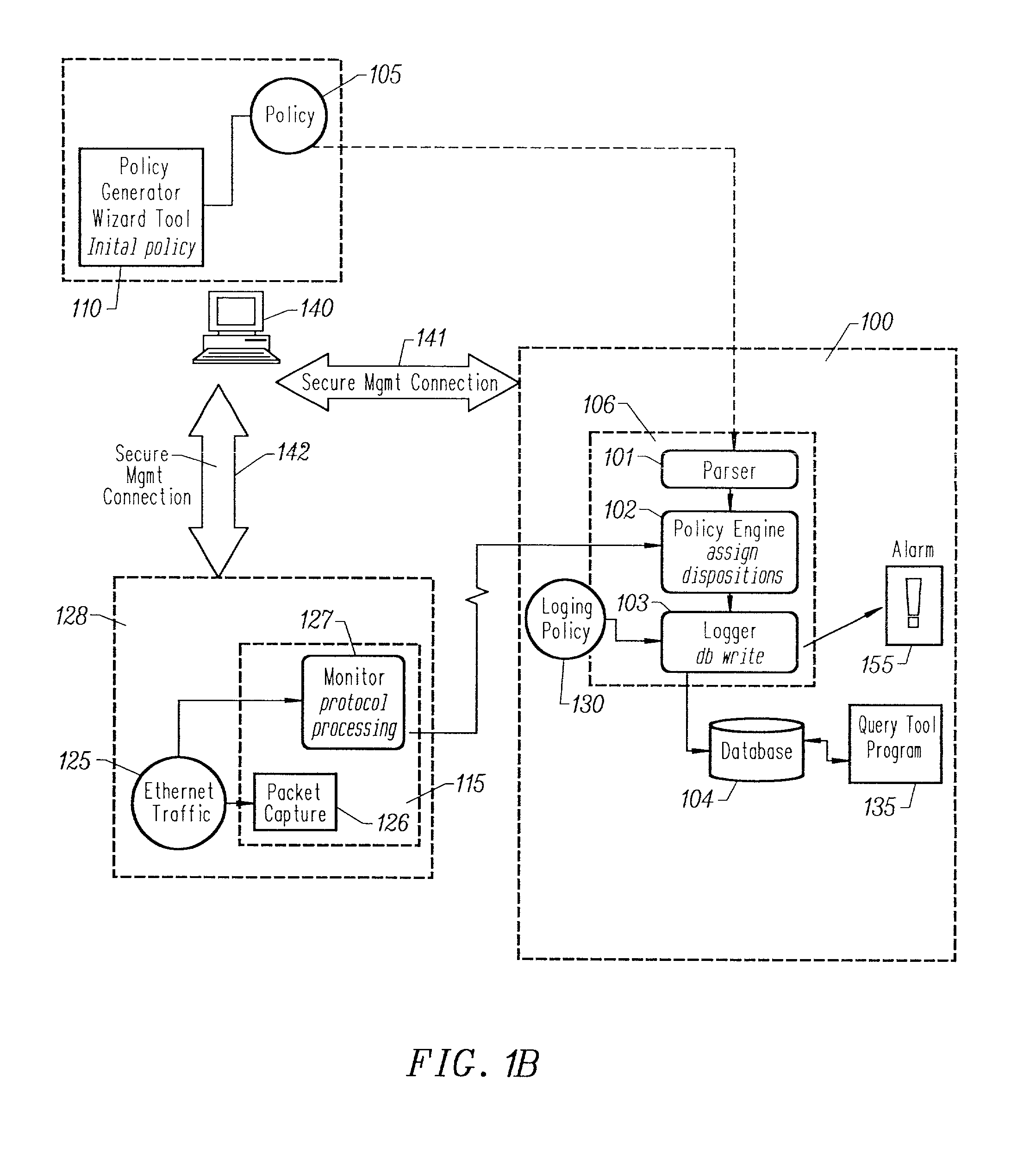Credential/condition assertion verification optimization
a condition and verification optimization technology, applied in the field of security and network services, can solve problems such as unintentional security breaches, security holes, and inability to examine in a short assessment visi
- Summary
- Abstract
- Description
- Claims
- Application Information
AI Technical Summary
Problems solved by technology
Method used
Image
Examples
example usage
[0264] The following invocation of the network monitor:
mon -ev 2 -I ALL=all C:.backslash.spm.backslash.quickstart.backslash.qs.dm-p
[0265] examines the qs.dmp file, producing extremely verbose output for event 2 only.
[0266] Table E provides a list of network monitor options according to the invention.
4TABLE E Monitor Options mon [-log LAYER[=[-]option1,[-]option2. . .]]* [-n npkt] [-skip pkt] [-until endpkt] [-ev eventID][-untilev eventid] [-justev eventid] [-noclients] dump_file -log -n npkt Only process the first npkt packets from the input data. -skip pkt Skip pkt packets before beginning to process the input data. -until endpkt Only process data through the packet number provided is reached -ev eventID Only process the data starting at the given eventID. -untilev eventid Only process the data through eventid. Note that in order to find the end of eventid, events with ids greater than eventid may be processed. -justev eventid Only process the data for eventid. Note that in order t...
example variation i
[0395] An equally preferred embodiment comprises the analysts first determining the customer requirements and the customer network credentials. Using this information, the analyst programs an initial policy. The analyst can derive and use additional information from the scanning process as described in the algorithm above.
example variation ii
[0396] The customer or analysts designs an initial best policy as a set of credentials and rules, set all dispositions to DENY, and monitors the network to determine what the dispositions should be.
V. Credential / Condition Assertion Verification Optimization
[0397] In the preferred embodiment of the invention, the policy language describes a policy decision involving two principals, an initiator and a target principal. These principals are identified by a set of one or more credentials. For each policy decision the policy engine ascertains which credential in the policy best describes the information about the principals involved in an interaction. Similarly, the policy language herein describes conditions that in turn describe tests performed on the state of an associated protocol event.
[0398] The preferred embodiment of the invention provides a credential / condition assertion verification optimization algorithm to ensure that the choice of credentials and conditions are made as effic...
PUM
 Login to View More
Login to View More Abstract
Description
Claims
Application Information
 Login to View More
Login to View More - R&D
- Intellectual Property
- Life Sciences
- Materials
- Tech Scout
- Unparalleled Data Quality
- Higher Quality Content
- 60% Fewer Hallucinations
Browse by: Latest US Patents, China's latest patents, Technical Efficacy Thesaurus, Application Domain, Technology Topic, Popular Technical Reports.
© 2025 PatSnap. All rights reserved.Legal|Privacy policy|Modern Slavery Act Transparency Statement|Sitemap|About US| Contact US: help@patsnap.com



